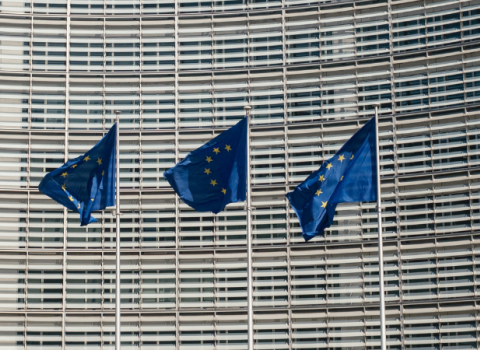The EU fuel cells body, created in 2008 to develop fuel cells and hydrogen technologies, is to manage its own programme and funds.
Europe’s collaborative effort to develop and commercialise fuel cells and hydrogen took a step forward this week when the body responsible for the €1 billion public-private partnership was freed of the Commission’s fetters, streamlining administration as it seeks to push fuel cells and related technologies to market.
“We are now in a position to take our own financial decisions,” Bert De Colvenaer, executive director, told Science|Business, as the European Fuel Cells and Hydrogen Joint Undertaking became an autonomous organisation.
The fuel cells body was launched in 2008, and until last week had been under the formal umbrella of the European Commission. Now it is judged to be grown up enough to manage its own programme and make proper use of public funds, the Commission said.
Fuel cells and hydrogen are a “key technology” if Europe is to achieve its 20-20-20 goals of a 20 per cent reduction in greenhouse gas emissions, 20 per cent of energy coming from renewable sources, and a 20 per cent increase in energy efficiency, by 2020, De Colvenaer told stakeholders at their general assembly in Brussels.
However, added De Colvenaer, a lot remains to be done if fuel cells and hydrogen technologies are to make enough progress within that timeframe.
Even in its own plan, the joint undertaking acknowledges the technologies are medium- and long-term options, and their contributions the 2020 targets will be “limited”. However, fuel cells and hydrogen energy sources are expected to play an important role in achieving the EU’s more ambitious targets for cutting greenhouse gas emissions by 2050.
“By that time it is expected that the critical barriers preventing commercialisation of these technologies will be overcome and their full socio-economic and environmental benefits realised,” the plan says. The barriers include the cost of fuel cells, the availability of large amounts of emissions-free, affordable hydrogen and the development of a long-term and stable regulatory framework.
Better communication is part of the challenge
The challenges facing the Fuel Cells and Hydrogen Joint Undertaking aren’t just technological. It also needs to integrate the different partners, become more organised and communicate with one voice, De Colvenaer, who was formerly employed at Toyota Europe, said.
The partnership is made up of the Commission, 64 companies ranging from multinationals to small and medium-sized enterprises, and 54 universities and research institutes. The Commission is putting in about €470 million in EU financing for the period 2008-2013, with the other half of the funding coming from industry.
Lucio Gallo, head of the joint undertaking’s new industry grouping and a member of the governing board, highlighted the risk that having so many participants can lead to too many different strategies. “Our main task is to home in on a few focused targets,” he said.
Such an approach could also help fuel cells and hydrogen gain a higher profile and more political visibility, an aim that was repeatedly called for at the Brussels meeting.
The Commission’s Rudolf Strohmeier, vice chair of the joint undertaking’s governing board, said, “The research community needs to raise its voice [...] be more outspoken” in order to achieve a redistribution of funds from other sectors. He also noted that the technologies needed to gain more acceptance from the general public and be viewed more positively.
Georg Menzen, representing the views of member states, echoed his comments. Photovoltaic and wind power are seen as “sexy” in Germany, Menzen said. Citizens are simply not as aware of fuel cells and hydrogen as they are of these other energy sources, he said.





 A unique international forum for public research organisations and companies to connect their external engagement with strategic interests around their R&D system.
A unique international forum for public research organisations and companies to connect their external engagement with strategic interests around their R&D system.